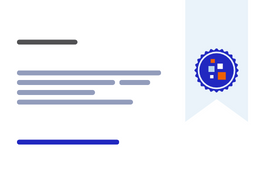This second of five courses in the Grading Calibration series will provide you with an understanding of what calibration is as you practice scoring sample work.
This course focuses on ELA teachers – particularly high school – and looks at literary analysis papers.
Calibration 2
This series will teach you what calibration is and give you direct feedback as you align your rubric scoring with that of experts in three major ELA categories – literary analysis, research papers, and middle school writing.
Connection to Practice
- Speed exercises for norming and calibration
- Practice in paper analysis and comparison against an expert calibration team’s scores
Requirements
- A willingness to learn and grow.
- A computer or phone with access to the internet.
- No paid software required – everything you need is in the Learning Module.


